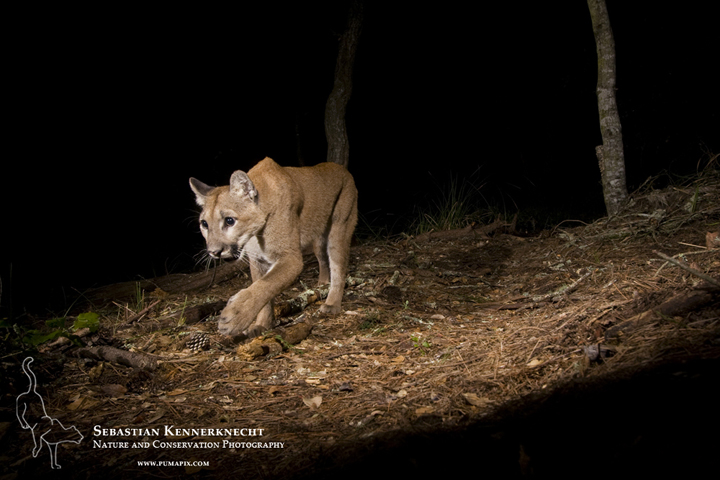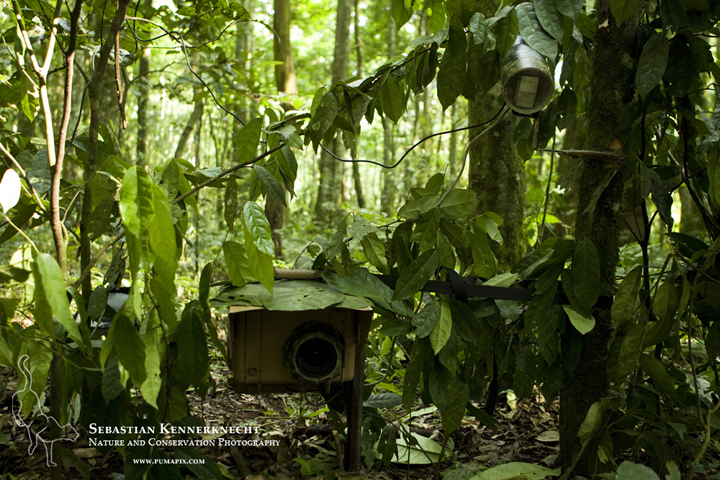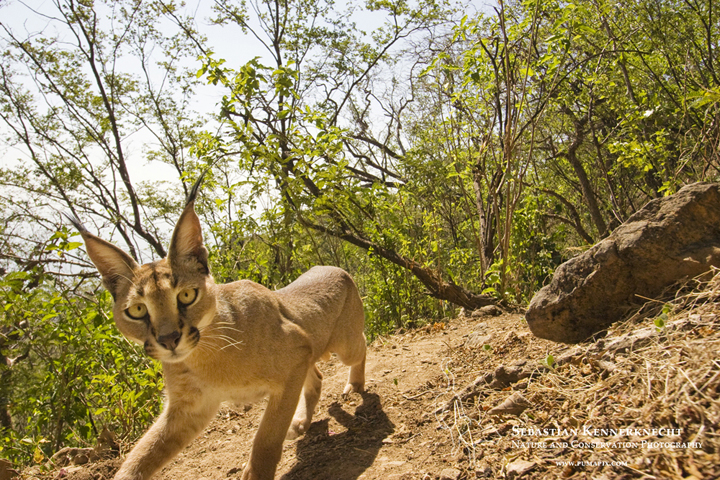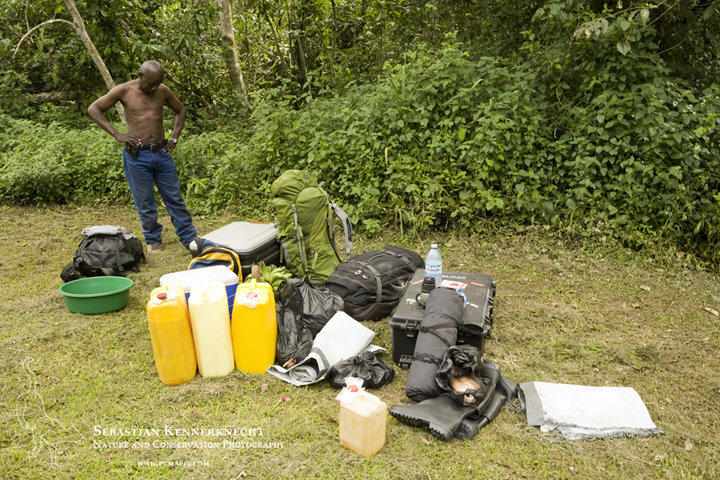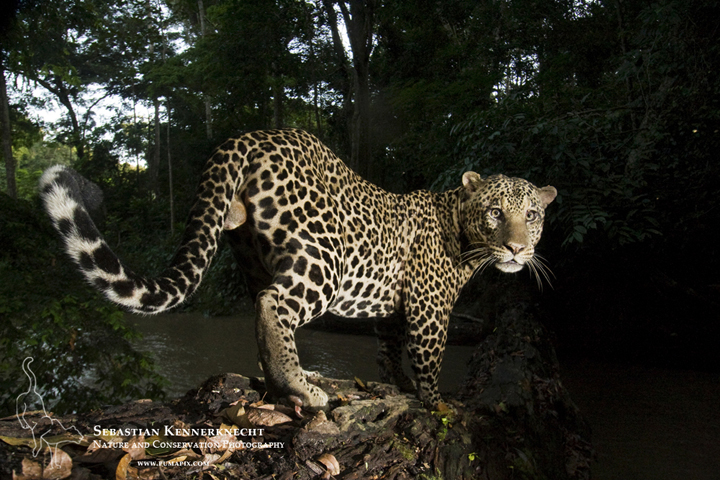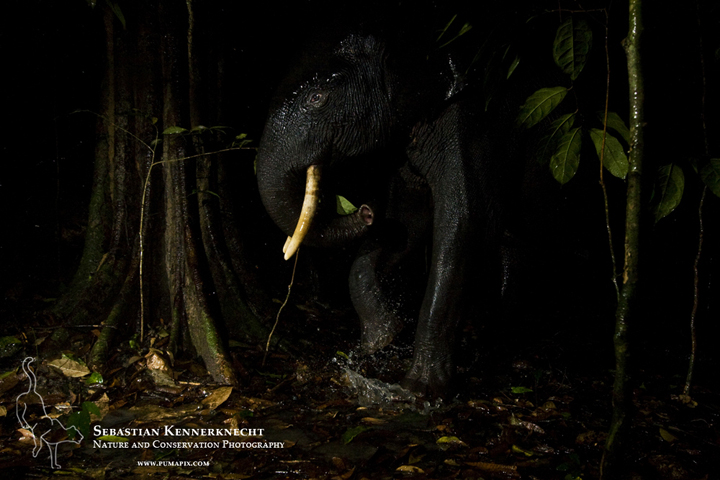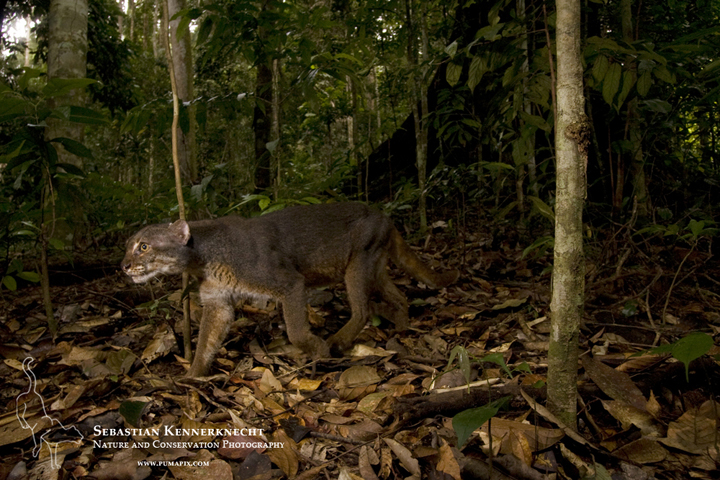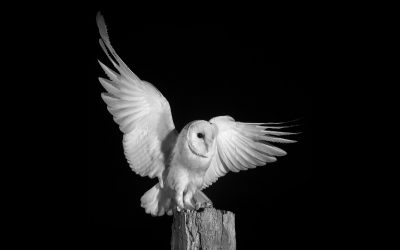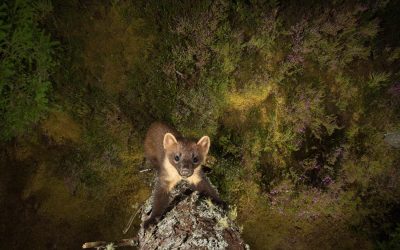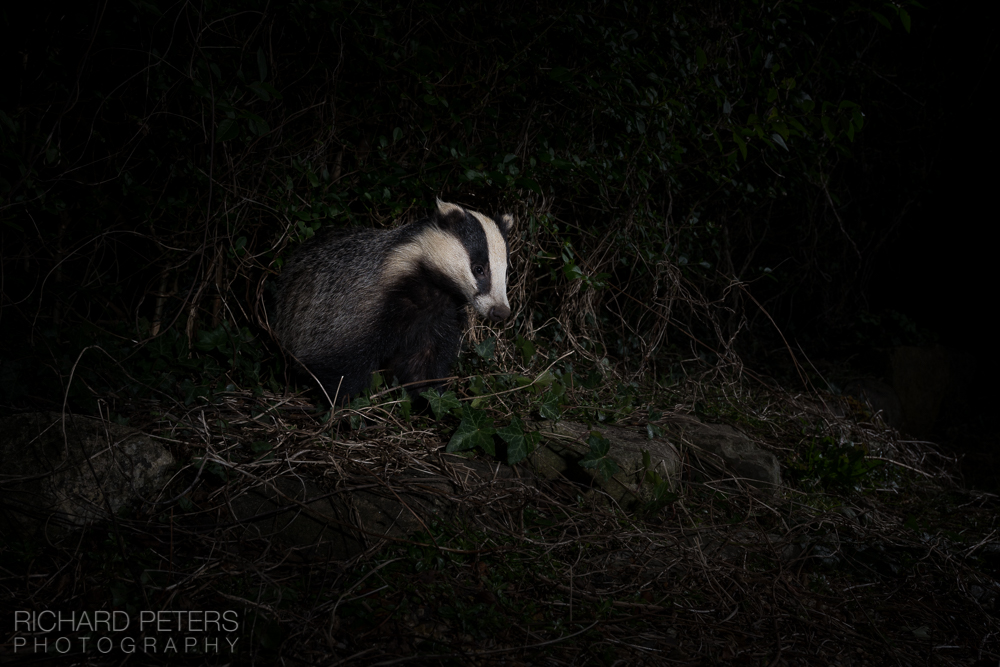SEBASTIAN KENNERKNECHT
Tracking Down the World's Wild CatsIntroduction
What inspired you to get involved with remote photography work?
You’ve worked on a number of species in various locations around the world, what was the first commissioned job that you opted to use this technique for and was it a big learning curve?
I think everyone who has built their own camera trap can attest to the fact that in doing so is taking the path of insanity. Even though I had seen National Geographic’s camera traps while working for Frans Lanting, I didn’t have an interest in camera traps at the time and missed the opportunity to see how the magazine’s engineers made it work. That subsequently meant that it took me a whole year to construct one camera trap set-up working to the level I expected it to.
What was your biggest challenge when working in Yemen photographing the Arabian Caracal?
The gear required can be quite complex when setting up camera traps. When travelling to remote locations, do you try to keep it as simple as possible or pack for any eventuality?
I do also bring a camera trap repair kit. Nothing would be worse than not being able to solder a small contact in the field, delaying your shooting time by days at a time.
From a technical perspective on location, what are the greatest challenges you have had to overcome?
What has been your most successful (or simply your favourite) remote photography project to date and how long did it take from concept to first successful image?
What’s been your biggest failure, either technically or photographically?
Where do you see this technique going in the future?
I think that as things progress in this genre, we will get two types of images. One, will be of animals rarely seen, the other will be of incredibly creative ways of showing species we have thousands of pictures of already. That’s all we really want as photographers, to see new images. That’s why I find camera trap photography so fascinating, it provides us with the opportunity to make unique pictures.
"I think that as things progress in this genre, we will get two types of images. One, will be of animals rarely seen, the other will be of incredibly creative ways of showing species we have thousands of pictures of already."
Of all the gear you use for camera trapping, what is your single most prized bit of kit you simply wouldn’t want to be without?
Sebastian Kennerknecht
Website: pumapix.com
To find out more about Sebastian’s Cat in Thin Air project, please visit http://catinthinair.org/
Other Interviews
How to Photograph Nocturnal Wildlife in Infrared
What is Infrared (IR) Photography?Light that comes from the sun consists of a very wide spectrum, and when we look at the world around us we are only seeing it in a very narrow part of this spectrum known as ‘visible light’. The sensors inside digital cameras are...
Terry Whittaker – Camera Trapping in the UK
IntroductionSince starting out as a freelance photographer in 2000, Terry has built up a reputation as one of the UK’s foremost wildlife photographers. He has won multiple awards for his work and his images often carry a strong conservation message. Terry’s desire to...
Richard Peters, on a Back Garden Safari
Introduction Richard Peters is a professional wildlife photographer from the UK with a style that often takes a priority of light, over subject. During the last year however, he has begun working with camera traps, concentrating on a location he has a personal...

